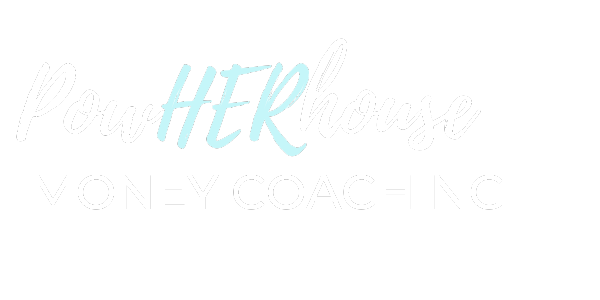Having a credit card is a big responsibility, and it’s one that shouldn’t be taken lightly. A credit card can help you build your credit score so you’ll have good credit when you need it, but we all know that credit cards can also lead to long-term debt and credit score damage (that can take years to fix).
With that in mind, it’s smart to have a plan in place and remember to consistently check in on your accounts. This plan should help you maximize the benefits of credit without putting your finances at risk.
If you’re a new credit card user, or just want to make sure you’re using credit as a tool to build the life you want, here are 10 tips to help you make the most of your credit card.
-
Choose the right card for you:
When it comes to credit cards, there’s no one-size-fits-all solution. Whether you’re a globe-trotter racking up frequent flier miles, a savvy shopper seeking the highest cashback rewards, or a retail enthusiast, there’s a card designed to fit your lifestyle. The key is to find the one that aligns best with your needs.
Always look at the APR (annual percentage rate). If you tend to carry a balance from month to month, you’ll want a card with a low-interest rate. Some cards charge annual fees, while others do not. There can also be fees for cash advances, foreign transactions, and late payments. Ensure you’re aware of all potential fees before making a decision.
What do you want out of your credit card? Different cards come with different benefits like travel miles, cash back, or a better shopping experience. Reviewing your card’s terms and benefits, can ensure you that your choice remains the best one for your financial journey.
And for those navigating the choppy waters of debt, fear not; we’ve got a special recommendation coming your way.
-
Always Have 2 cards:
In the ever-changing financial landscape, it’s wise to have a safety net. Carrying cards from at least two different banks can be a game-changer. This strategy not only offers a buffer when banks tighten credit limits during economic slumps but also provides a backup if one card is lost. Additionally, having a mix of cards can potentially enhance your credit score.
-
Pay It Off:
Debt is like quicksand; without a strategic approach, it only pulls you in deeper. This underscores the importance of clearing your balances monthly. Personally, I go a step further by making weekly payments to maintain the upper hand. Why? Making weekly payments not only keeps you accountable but also ensures you’re always one step ahead of those pesky interest rates.
Missing a payment or even being just a day late can trigger late fees. Over time, these can accumulate and become a significant expense.
Consistently missing payments or only making minimum payments can lead to reductions in your available credit. In some cases, chronic late payments can result in account closure.
-
Keep (Your Utilization) Low and Slow:
At its core, credit utilization measures how much of your available credit you’re actively using. Think of it as a snapshot of your financial discipline and trustworthiness to lenders. High utilization suggests you might be living close to your financial limits or not managing your finances optimally, while low utilization portrays financial prudence.
Why Does it Matter?
Credit utilization can account for almost 30% of your FICO score, one of the most commonly used credit scoring systems. This makes it the second most significant factor, right after payment history. Lenders and credit card issuers often see high utilization as a red flag. It suggests potential over-reliance on credit, indicating that the borrower may face difficulties in repaying loans. Keeping your utilization low ensures you have a buffer for unforeseen expenses or emergencies. This flexibility can be invaluable in avoiding debt accumulation during challenging times.
How do you maintain a low credit utilization?
Regularly Monitor Your Balances: Be aware of your spending. Check your balances a few times a month to ensure you’re staying within a comfortable range.
Pay More Than Once a Month: If you find yourself using your credit card frequently, consider making bi-monthly payments to reduce the average balance that’s reported to credit bureaus.
Spread Your Expenses: Instead of maxing out one card, spread your expenses across multiple cards. This can help in distributing the utilization rate, ensuring no single card shows a high ratio.
-
Know Your Rate:
In a perfect scenario, we’d always clear our credit card balances and sidestep interest concerns. However, reality has its curveballs. When you’re holding onto a balance, understanding which card is most gentle on your finances is crucial.
Given that certain cards come with fluctuating interest rates that can shift unpredictably, being well-informed is your best defense against unforeseen shocks. These rates are often tied to broader financial indicators like the prime rate. This volatility can make budgeting a challenge and lead to unwelcome surprises on your monthly statements. Being well-informed about how these variable rates work, and regularly checking your credit card statements for rate changes, becomes your primary shield against unexpected financial setbacks. By staying vigilant and understanding the terms of your credit agreement, you can better manage your debts and potentially save a significant amount of money in the long run.
-
Enter the Secured Credit Card:
Debt can feel like a dark cloud, but there’s always a silver lining. Enter the secured credit card. A secured credit card is a way to build back up your credit while using a credit card. A secured credit card operates similarly to a standard, or unsecured, credit card, but there’s one crucial difference: it requires a security deposit. This deposit acts as collateral and usually determines your credit limit. For instance, if you deposit $500, you might get a credit limit of the same amount.
By depositing money as collateral and then responsibly spending and repaying, you start to build up your credit, one swipe at a time. But, you have to also pay off that debt which is a financial emergency. While they serve as a great starting point, the ultimate goal should be responsible usage, timely payments, and eventually transitioning to an unsecured card for more financial flexibility.
-
Balance Transfer Cards:
Credit card offers frequently flood our mailboxes, boasting attractive features like 0% APR periods on balance transfers and new purchases. It’s tempting, but it’s also crucial to tread carefully.
When considering a card primarily for its 0% APR balance transfer benefit, remember to refrain from using it for fresh purchases. Why? Because blending the two can be a recipe for financial chaos.
The primary reason for opting for a balance transfer is usually to get some breathing room from accumulating interest on existing debt. By adding new purchases to the mix, not only do you blur the lines between old and new debt, but those fresh expenses might also be subjected to regular interest rates, instead of the introductory 0% APR. This can quickly snowball, putting you right back into the high-interest debt spiral you were trying to escape.
There’s typically a transfer fee of 3% to 5%. So, before moving forward, it’s crucial to assess your cash flow and determine your repayment timeline, taking into account the interest being charged on your current card versus the transfer fee. Make sure to consider whether you’ll be able to pay off the balance within the introductory period.
-
Avoid Closing Old Credit Card Accounts
Hold Onto Those Old Cards: Thinking of discarding that first credit card you got back in college? Think twice! While it might seem like just an old piece of plastic, closing that account can affect the longevity of your credit history and your total available credit—key components in determining your credit score. That card that hasn’t been used in years that you found in your drawer symbolizes your long-standing trustworthiness in the credit world. Handle it with care.
-
Keep ‘Em Active:
Retaining old credit card accounts might require more than just the decision to keep them. Often, issuers might shutter inactive accounts after a prolonged period of non-use. So, even if that old card doesn’t offer the best rewards or comes with a steep interest rate, it’s essential to weave it into your regular spending pattern. To prevent your card from falling into the “inactive” category, consider these straightforward tactics:
Calendar Alerts: Mark your calendar to use your card periodically, say, every six months. This ensures that you remember to keep the account active.
Small, Routine Purchases: Assign a particular minor monthly expense to that card, like a streaming service subscription. Pair this with an automatic payment setup, ensuring the balance is cleared without manual intervention.
By employing these strategies, you can ensure that your older cards remain in good standing and continue to positively influence your credit profile.
-
Credit Over Debit:
Keeping it Safe and Sound: Look, we all know how important it is to keep our money secure these days. If your card gets hacked or stolen, they are spending the bank’s money. If your debit card gets hacked or stolen, they are spending money right out of your checking account. Either way you get made whole in the end but you might have some cash flow issues waiting for the bank to reimburse you for funds out of your checking.
Sure, both credit and debit cards have their perks, but if we’re talking about safety against scams or unauthorized charges, credit cards are the clear winners. They’ve got your back with better policies that make it easier to dispute any shady transactions.
The Takeaway: When you know how to handle your credit card like a pro, it can seriously up your financial game. Just play it smart, know the do’s and don’ts, and you’ll not only keep your money safe but also rack up some pretty cool rewards. Remember, the magic lies in being disciplined. Pay off your balances in full, avoid unnecessary debt, and keep an eye on those statements. With the right approach, a credit card isn’t just another card in your wallet; it’s a tool to financial empowerment.







